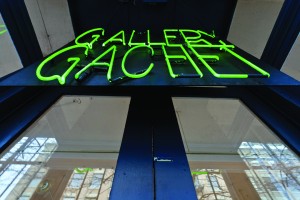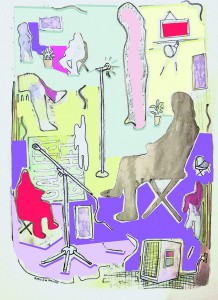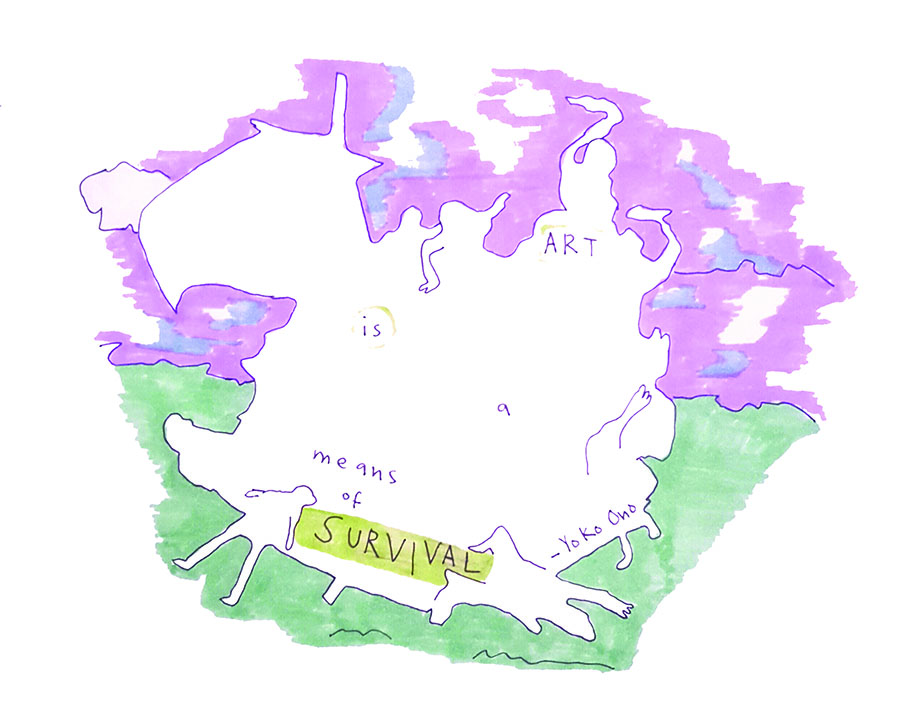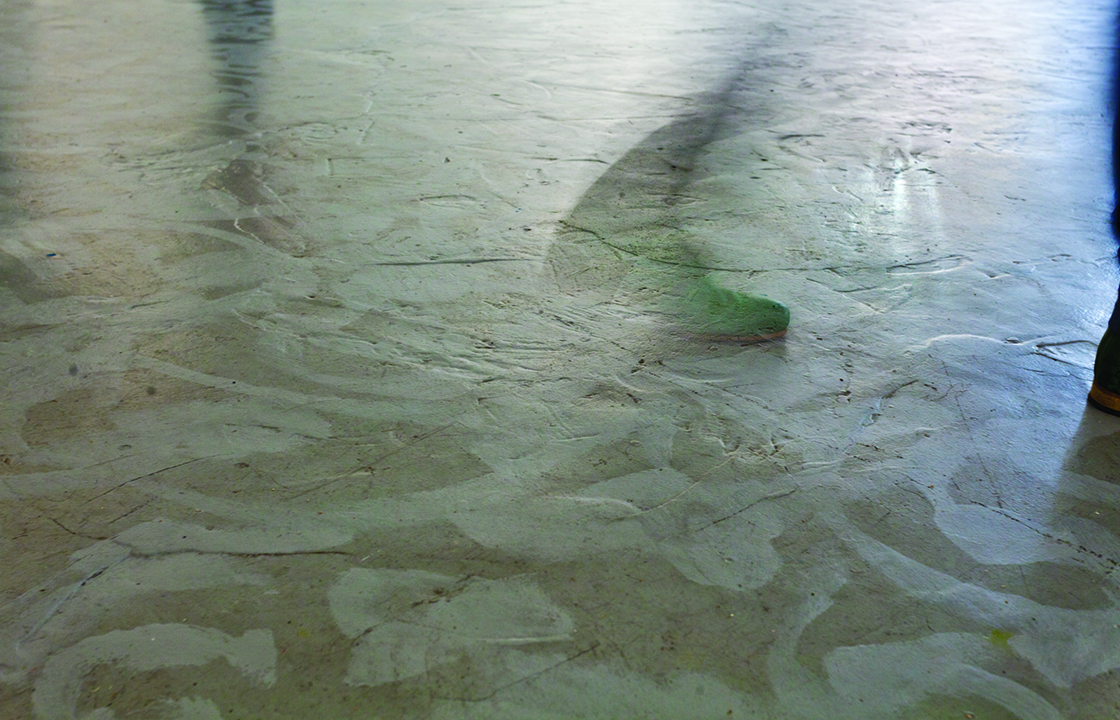In the heart of the Downtown Eastside, Gallery Gachet is a rock of resistance giving its collective of artists an outlet to express their creativity. It is part gallery and part drop-in centre. I meet with artist and Gachet collective member June Conley, and Programming Coordinator Kristin Lantz at the space, and immediately feel at ease. Lantz is quick to explain why people feel comfortable at Gachet: “They can come in for drop-in programming. They can get some tea, work on computers and not feel like they’re not welcome. We do a lot of shows and a lot of programming that kind of speaks to that. This show is one of them.” The three of us begin a tour of its current exhibition Voices Of The Corridors.

This exhibition is an annual tradition. Each year Gallery Gachet hosts a show of works by its collective members. Lantz explains the origins of Voices of the Corridors: “The idea started from us thinking about repressed memories, and then we wanted to find a way to have that sort of connect with the climate of what’s happening with the space now in terms of thinking through funding.”

In September, 2015, Gallery Gachet received notice that after a twenty-one year funding relationship with Vancouver Coastal Health, they were losing funding with ninety days notice. The health board cited a shift to “clinical services” as the reason for the sudden notice. The funding has since been extended to March 2016. For a non-profit art organization already working within tight financial constraints, this has been a blow. The news impacted both the collective and the community.
Lantz continues, “We started thinking about the ways in which there may be oppression happening or repression of yourself, and facing that oppression with ideas or these creative, wonderful thoughts that you might have, but feel like you can’t say.” Through that process of conceptualization, the collective determined the theme of this year’s exhibition would comprise of three main ideas: repression of the self, repression of a movement, and oppression of a people.
One of the artists is Pierre Leichner, who has constructed an object that until illuminated, is difficult to fathom. The piece is covered in what looks like trash and old, forgotten items. Conley points to old pill containers and flicks a switch, and an image comes to life. The illumination brings into focus a shadow of a butterfly. It is a brilliant display of how thrown away and discarded items become treasured belongings to new owners. It says a lot about the life cycle of possessions in an urban environment, and it is a theme that occurs throughout the exhibition. For the construction of this piece Leichner had taken donations of items to build this monument to represent the life force of the gallery and the surrounding community.
Conley reads excerpts of Leichner’s artist statement out loud: “‘The idea for this piece comes from a quote from a Leonard Cohen song [“Anthem”] ‘There is a crack in everything, that’s how the light gets in.’ … Despite its apparent fragility, for me the butterfly symbolizes incredible strength and persistence. It also symbolizes transformation and beauty. This work speaks to the power and necessity of art for our individual well being and that of our communities. I believe it reflects what Gallery Gachet is and does.”

For the exhibition Conley created a piece called “Angel of Anarchy.” It has several interactive components, including a timer and a wind up music box. The timer is set in motion and there is a delicate ticking as Conley explains her creation: “The angel of anarchy, she’s kind of a guardian, then at the same time she’s a person trying to help the people in the neighbourhood. So as far as the government would be concerned she would be an anarchist, right, because she’s working with the people and so she’s got many hands that are juggling different things. Coming out of the top of her head are different objects of the people’s that were destroyed when they dumped their carts and took their stuff away.”
Conley is referring to the deliberate emptying of people’s shopping carts. All over the downtown core of Vancouver and in neighbourhoods as far as Kitsilano shopping carts are used to hoard personal possessions. Unlike a vehicle a cart can’t be locked and so often people return to find their carts emptied by zealous city workers. Ivan Drury is an organizer with Alliance Against Displacement and is familiar with poverty issues. Asked about the emptying of carts over Twitter he said, ”It’s awful. It’s just destabilizing and dehumanizing.”
The timer in “Angel of Anarchy,” June says, ”reminds us of how much time we have left,” adding, ”What’s going to happen next? How long is it going to be that we are going to be able stay here?”

Uncertainty is front and centre for the collective members of Gallery Gachet. Their concerns are caused by the funding cut, but it is a similar uncertainty that is felt all across the Downtown Eastside by low income residents. Our attention shifts to the art piece by Karen Ward. It is a wave shaped metal piece with honeycomb like holes. Upon looking through the holes we see not only our own reflections, but also a message etched on the mirror: “No one like you has ever existed or will ever exist again.” As Conley, Lantz and I take turns to look through the holes, Conley’s timer buzzes. Time’s up.
x
Voices Of The Corridors: Repression of the Self, Repression of a Movement, Oppression of a People features works by Afuwa, Sharon Burns, June Conley, Rebecca Chunn, Pierre Leichner, Tchavdar Petkov, William Nelson Pope, Bruce Ray, and Karen Ward. The exhibition runs until February 21 at Gallery Gachet, located at 88 East Cordova Street. Gallery Gachet also runs a micro-exhibition space and retail store within the space called Salon Shop, which currently features works by Andy Morning Star and Stella Castell.


